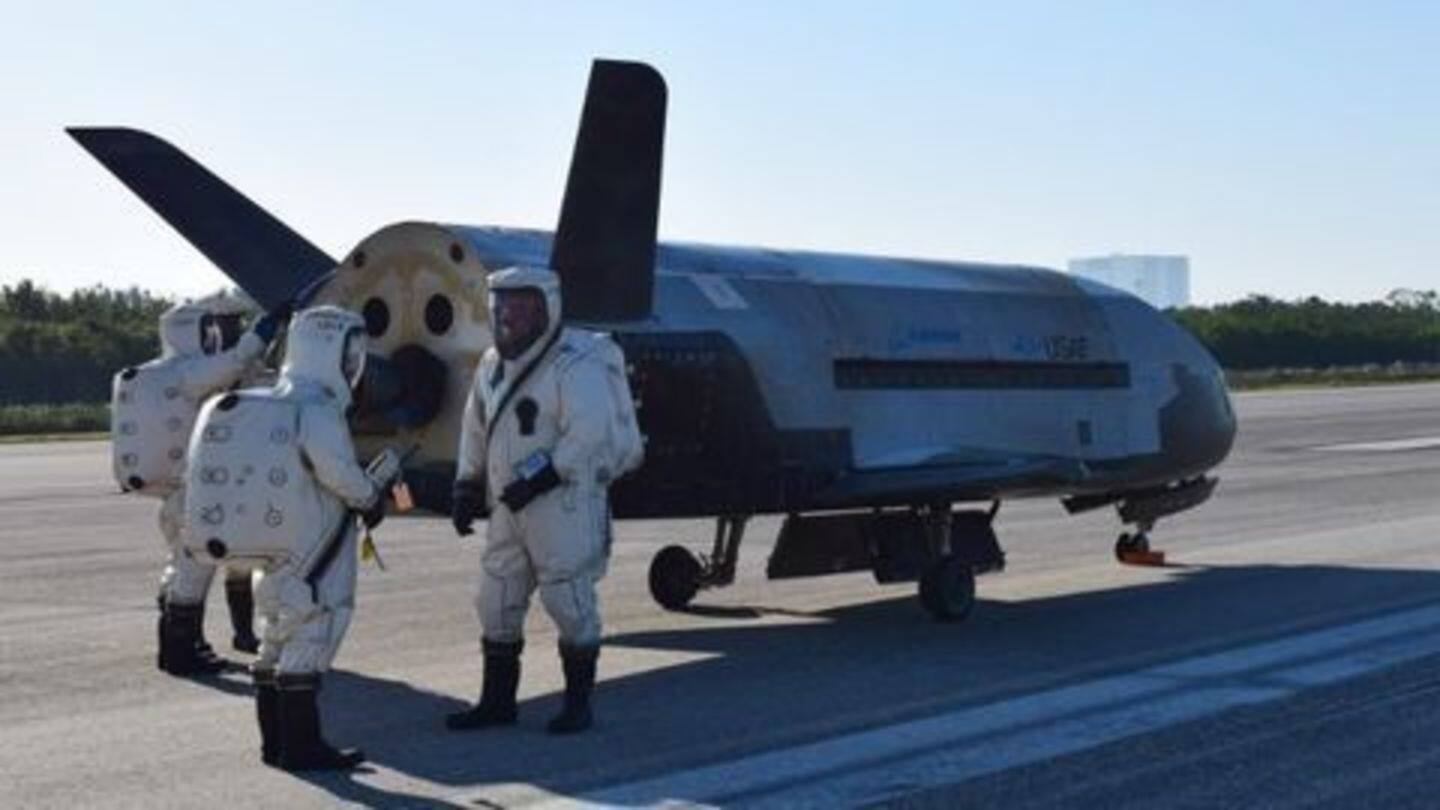
US military's top secret X-37B space plane returns from orbit
What's the story
After a record 718 days in orbit, the US Air Force's X-37B space plane has returned to Earth by landing at NASA's Kennedy Space Centre, Florida. The unmanned and reusable space plane, which resembles a miniature space shuttle, was shot into space to conduct a top secret mission. So far, it was the classified program's fourth and lengthiest mission.
NASA roots
X-37B program has its roots in NASA
In 1999, NASA started the X-37 program and initially planned to develop two separate spacecraft. The entire program was transferred to the Defense Advanced Research Projects Agency (DARPA) in 2004 and then became classified. Boeing has been the primary contractor for the program right since its inception in 1999. Boeing ended up making two X-37B planes for the air force.
Details
US has two X-37 space planes in fleet
The X-37B space plane, which has been built by Boeing, blasted off aboard an Atlas 5 rocket in May 2015 from nearby Cape Canaveral Air Force Station. The plane, which is also known as Orbital Test Vehicle (OTV), is 29 feet long and has a 15 feet wingspan. The X-37B is one of two such aircraft in the air force's fleet.
Space weapon?
Air force denies X-37B is a space weapon
The secrecy surrounding the air force-run X-37B program has led to speculation that the orbiter could be some type of space weapon capable of terminating or capturing enemy satellites. The air force has denied this, saying the plane is a test bed for future spacecraft that conducts experiments in space and returns. The plane may test sensors and other equipment for future spy satellites.
Information
X-37B's purpose remains classified
The US Air Force said the orbiters "perform risk reduction, experimentation and concept-of-operations development for reusable space vehicle technologies." The Air Force gave no further details. The program's cost remains classified.
Previous launches
X-37B undertook three missions in the past
The X-37B, which is managed by the Air Force Rapid Capabilities Office, first took off for orbit in April 2010 and returned eight months later. In March 2011, the second mission was launched and lasted 15 months. In December 2012, the X-37B embarked on its third mission and returned 22 months later. The air force is planning its fifth mission launch later this year.